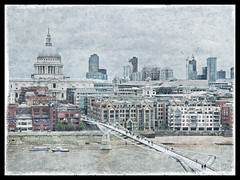Following on from the two previous blogs on climate change, drought, record heat waves and the resulting bushfires, here is another with some thoughts.
Victorian bushfires are usually started by either:
- lightning strikes
- electrical power lines contacting trees in strong winds or poles falling over
- intentional arson
- thoughtlessness – out of control fires, use of power tools or throwing cigarette butts out of car windows on high fire danger days
It now seems that many of the bushfires were started by overhead power lines in the strong north winds reaching 100kph (not unusual in for such winds in our Summers) combined with primed tinder-dry forests and a day with hottest temperatures on record combined with low humidity and the strong fanning winds. The lethality of the resultant fires was magnified by the dry “cool” change with different wind direction brought by the usual cold fronts which follow such hot northerly winds in Summer.
Is it time to consider underground power for the forest regions?
Arguments have raged over the years on the place for controlled burn offs to reduce fuel (bark and leaf litter) in forests combined with the fact that Australian Eucalypt forests need cyclical fires for their long term health – some need 5 year cycles, others 12, and yet others 30 year cycles. Indeed,last financial year, controlled burn offs in Victoria covered over 150,000 hectares of land, the largest amount since 1993 and 18% more than the annual target – although there is some debate on how strategic the burn offs were.
The problem with controlled burns is that there are only about 10-12 days each year with safe conditions taking into account temperature, winds and humidity levels and worse still, large scale burns on such days poses health threats to those with respiratory conditions.
The current stay or go policy may need revision depending on the fire danger index (a measure of anticipated wind speed, ambient temperature and low humidity). Previous recommendations were made on the grounds that you could stay if your home was defensible (NB. homes on a northerly slope with nearby tall trees and made from flammable materials are probably NEVER defensible in a forest fire with a north wind ), but these assumptions were based on fire danger index levels of less than 100 (high danger is 12-25, extreme is > 50, Ash Wednesday in 1983 had a level of 102).
On the day of the bushfires last Saturday, now called “Black Saturday”, the fire danger index level was an incredible 180 in the Kilmore region.
Perhaps it is time to consider that only specially designed homes in appropriate environments should be considered defensible on days when the fire danger index exceeds 100, and unless people have a fire bunker to retreat to on those days, they should evacuate early.
Finally, the bushfires have exposed how fragile our existence really is, not just because of the immediate risk of death from the fires and the devastation they cause with little warning, but the potential for greater calamity.
It is well known that south-eastern Australia including Victoria is in the grip of a 12 year drought with no signs of it breaking and ever diminishing water supplies despite water use restrictions, and as our heat waves have shown, Melbourne is not designed to cope well with them in terms of power supply and delivery as well as our transport system is not designed to work in high temperatures.
Less than 10 years ago, Melbourne was voted the most livable city in the world, but then rapid population growth, spreading urbanisation and drought are demonstrating that as a “civilisation”, we may have peaked and now in decline as our water resources are unable to meet demand.
The bush fires have highlighted the fragility:
- it would not take much for a bush fire to knock out our main power generators in Gippsland or even just the main distribution lines to the city
- perhaps of even greater long term impact is if the fires made it into our pristine water catchment areas with their mature mountain ash forests
- this would contaminate our water supply with ash, but worse,
- the new forests that develop over the next 50 years will use much more of the rainfall and thus run off into the dams may be reduced by 30-50% – something we cannot afford in an environment of diminishing rain falls and increasing demand
If this drought is not just a variation but a new way of living due to climate change then we will need to reassess our priorities and at the very least stop the increase in demand on our resources by reducing population growth in this region or we will be forced to resort to environmentally unfriendly solutions such as more desalination plants just to survive.










